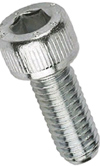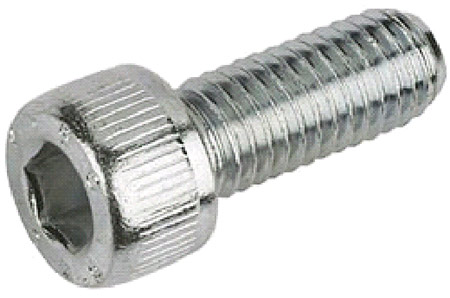The risks of plating fasteners
 The subject of the plating of fasteners is one that causes some debate. Many companies refuse to contemplate the use of plated fasteners, while some manufacturers will supply them only at a customer's insistence and with a waiver that absolves them of any responsibility for losses resulting from a breakage.
The subject of the plating of fasteners is one that causes some debate. Many companies refuse to contemplate the use of plated fasteners, while some manufacturers will supply them only at a customer's insistence and with a waiver that absolves them of any responsibility for losses resulting from a breakage.
Other companies are much happier to supply plated fasteners, however, having taken every precaution to minimise the chances of embrittlement before, during and after the actual electroplating process. Although we see fewer zinc-plated fasteners being used in high-strength materials, cadmium plating is still a popular process - 'NAS' airframe bolts are an example of a cadmium plated fastener - and silver plating is often used to prevent seizure of materials prone to galling or in situations where conditions are too harsh for lubricants to continue to work over long periods.
The reason for the strong opinions held by some is due to a phenomenon called hydrogen embrittlement, which leads to a drastic reduction in fatigue life and static strength. While there are a number of precautions that may be taken to lower the risk of damage from hydrogen embrittlement, ISO 4042, an international standard relating to electroplating of fasteners, states, "Complete elimination of hydrogen embrittlement cannot be assured."
During the electroplating process, and commonly also in any earlier cleaning and descaling processes, hydrogen is evolved at the surface of the components and, particularly in the case of steels, is absorbed by the surface of the metal. Higher strength steels are particularly sensitive to hydrogen embrittlement.
In order to reduce the risks, mechanical cleaning and descaling processes are recommended, and acid cleaning is said to present a greater risk of damage than alkali processes. In an acid, iron reacts to form a salt, with the result that hydrogen (H+) ions thus liberated combine with electrons to form hydrogen gas.
Any electrochemical cleaning processes used should be carefully selected by the plater; cathodic process liberate hydrogen, whereas anodic processes do not.

Following the plating process itself, it is widely agreed that a baking process, carried out soon after plating, can be an effective way to reverse much of the damage that occurs during plating. This is done at relatively low temperature (around 200 C) and there are guidelines for how long it process should be carried out for (1) according to the strength of the steel, with higher-strength alloys requiring longer treatments. For steels with a tensile strength of 1700-1800 MPa (247-261 ksi), the minimum recommended time for a post-plating bake is 22 hours.
We should not be under the impression though that only steel fasteners suffer from this problem, although they are probably the most likely candidates for plating processes as far as fasteners are concerned. Titanium, nickel and aluminium materials have been reported by Dini (2) as suffering from this phenomenon. However, some of the more exotic fastener materials are known not to suffer from hydrogen embrittlement.
It should also be noted that it is not only electroplating processes that cause steel fasteners to suffer in this way. Electroless plating processes, such as electroless nickel, also produce hydrogen embrittlement, as can phosphate coatings in a more limited way.
1. Raymond, L., (editor), "Hydrogen Embrittlement: Prevention and Control", ASTM STP 962, 1988
2. Dini, J.W., "Electrodeposition", published by William Andrew, 1993, ISBN 0-8155-1320-8
Fig. 1 - In solving a corrosion problem in plating fasteners, we should be careful not to damage them during the plating process
Written by Wayne Ward